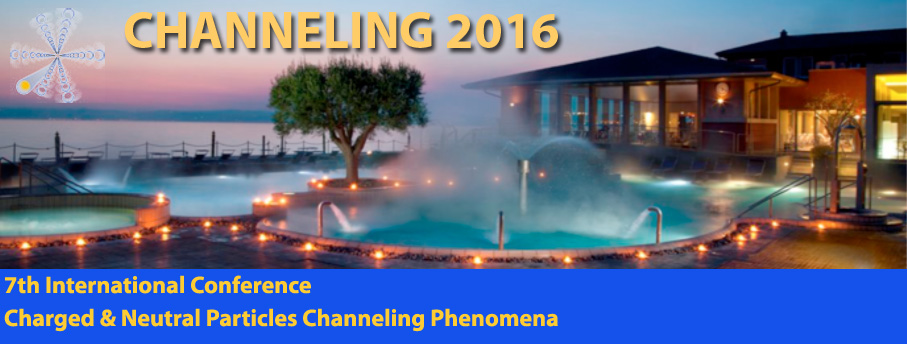Prof.
Igor Vnukov
(Belgorod sate university, Belgorod, Russia)
Yu. A. Goponov1, M.A. Sidnin1, K. Sumitani2, Y. Takabayashi2, I.E. Vnukov1
1) Belgorod National Research University, 14 Studencheskaya str., 308007 Belgorod, Russia
2) SAGA Light Source - 8-7 Yayoigaoka, Tosu, Saga 841-0005, Japan
Recently, in connection with the design of the International Linear Collider [1] and Compact Linear International Collider [2] increased interest in new methods of determination of parameters of ultra-fast electrons beams (Ee >>10 GeV) with a transverse size of about several tens nm. Currently used methods of electron beams diagnostics based on the detection of radiation in the optical range stop working due to the coherent effects in radiation [3]. The transition to X-ray radiation with a shorter wavelength and oriented crystals [4] is hampered by the rapid degradation of the crystal structure due to the high density of particles on a target [5] and its destruction. The use of surface PXR [6] proposed in [5], is feasible only for Ee>200 GeV and greater because of small values of the radius of attenuation of the Coulomb field of the particle γλ, where γ is Lorentz-factor and λ is emission wavelength. Discussing the prospect of use for diagnostic purposes of radiation of electrons when they fly near the x-ray mirror, this will give the opportunity to work with a longer wavelength to obtain the desired values of γλ (about some hundred microns and greater) on already existing electron accelerators. Desirable X-ray mirror parameters and needful experimental equipment for proof-of-principle experiment at Mainz microtron and KEK-ATF accelerator are discussed. The work is supported by the Russian Science Foundation Grant (project N 15-12-10019).
References
1. ILC Technical Design Report, 12 June 2013 // www.linearcollider.org/ILC/TDR
2. A Multi-TeV linear collider based on CLIC technology: CLIC Conceptual Design Report, edited by M. Aicheler et al. // CERN, 2012. 841 p.
3. H. Loos et al. // Proc. FEL’08, Gyeongju, Korea, August 2008. – THBAU01, – P. 485.
4. A. Gogolev et al. // J. Phys.: Conf. Ser. 357 (2011) 4.
5. Yu.A. Goponov et al. // NIM, 2016, A808, P. 71
6. A.I. Benediktovitch, I.D. Feranchuk // J. Phys. Conf. Ser. 236 (2010) 012015
Summary
Recently, in connection with the design of the International Linear Collider [1] and Compact Linear International Collider [2] increased interest in new methods of determination of parameters of ultra-fast electrons beams (Ee >>10 GeV) with a transverse size of about several tens nm. Currently used methods of electron beams diagnostics based on the detection of radiation in the optical range stop working due to the coherent effects in radiation [3]. The transition to X-ray radiation with a shorter wavelength and oriented crystals [4] is hampered by the rapid degradation of the crystal structure due to the high density of particles on a target [5] and its destruction. The use of surface PXR [6] proposed in [5], is feasible only for Ee>200 GeV and greater because of small values of the radius of attenuation of the Coulomb field of the particle γλ, where γ is Lorentz-factor and λ is emission wavelength. Discussing the prospect of use for diagnostic purposes of radiation of electrons when they fly near the x-ray mirror, this will give the opportunity to work with a longer wavelength to obtain the desired values of γλ (about some hundred microns and greater) on already existing electron accelerators. Desirable X-ray mirror parameters and needful experimental equipment for proof-of-principle experiment at Mainz microtron and KEK-ATF accelerator are discussed. The work is supported by the Russian Science Foundation Grant (project N 15-12-10019).
Prof.
Igor Vnukov
(Belgorod sate university, Belgorod, Russia)
There are no materials yet.

